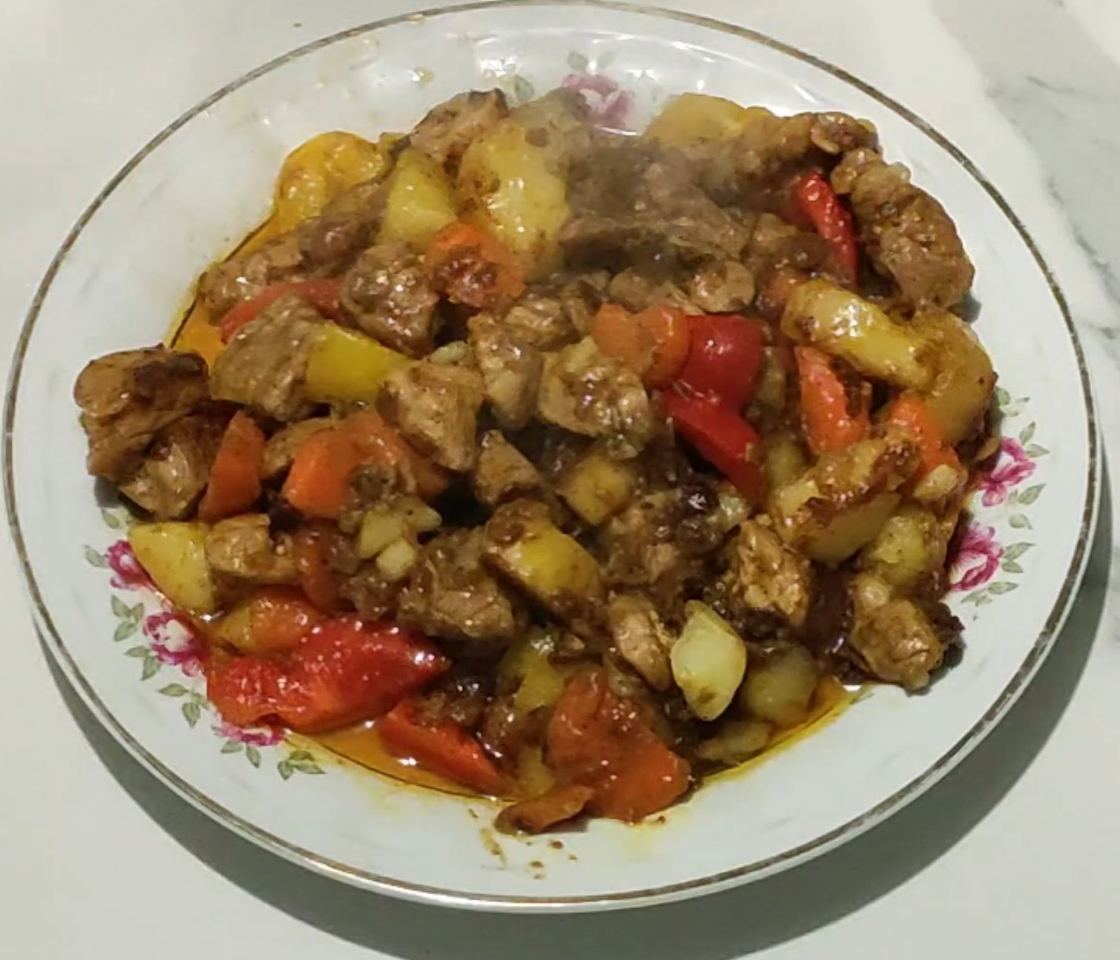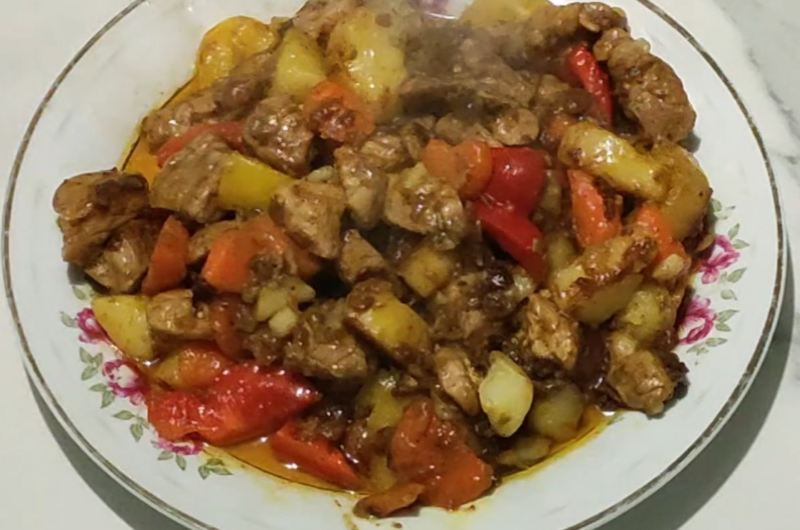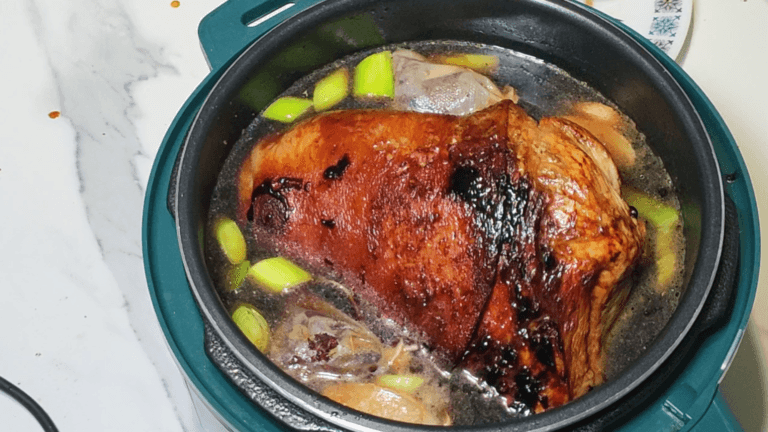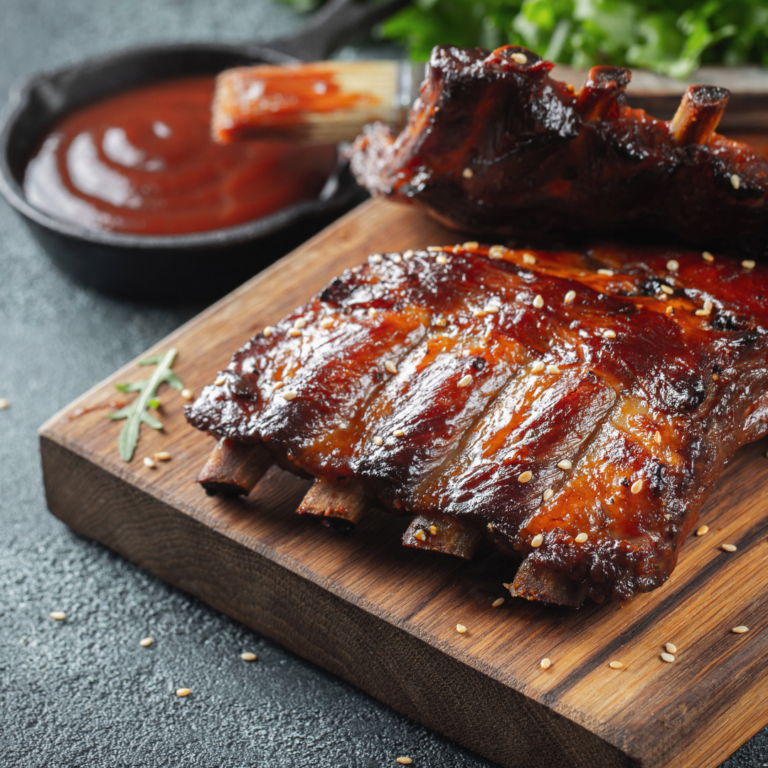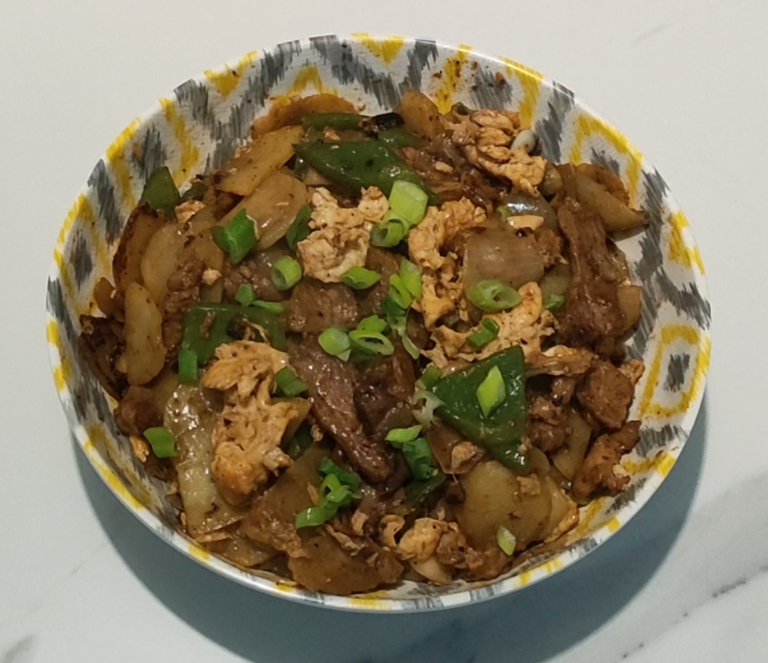How to Make Delicious Pork Curry
Are you ready to embark on a culinary adventure that tantalizes your taste buds with the rich and aromatic flavors of Asian-style pork curry? Perfect for cozy evenings or festive gatherings.
Delicious Pork Curry
Course: Pork4
servings30
minutes25
minutes300
kcalAsian Style Pork Curry
Ingredients
400g pork shoulder
1/2 onion
3 cloves garlic
5 slices ginger
1/2 carrot
2 small potatoes
1/4 red pepper
1/4 yellow pepper
2 tbsp fish sauce
coconut milk
1 chicken stock cube
1/2 tsp tumeric
pepper for seasoning
Directions
- cook diced spuds and carrots for 2 mins (remove)
- cook diced peppers for 1 minute (remove)
- cook garlic ginger and onion 1 minute add chopped pork
- cook pork until browns, add fish sauce add shake of pepper
- add coconut milk
- add chicken stock cube
- add curry powder. add tumeric
- cook for 2-3 minutes, add spuds and carrots,
- place the lid and cook for 15 minutes
- remove lid, add peppers cook for further 2 – 3 minutes
- serve with basmati rice. Enjoy!
Recipe Video
Notes
- don’t be afraid to experiment.
- leave a comment and enjoy your cooking.
this delectable dish combines succulent pork with a harmonious blend of spices, coconut milk, and vegetables. Let’s dive into the intricacies of crafting this mouthwatering masterpiece!
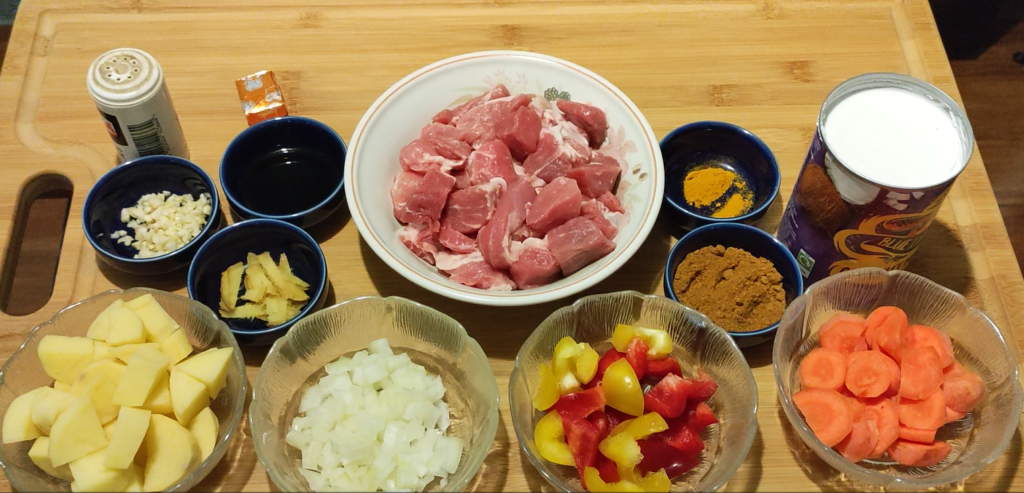
Ingredients
To begin your culinary journey, select the perfect cut of pork. Opt for tender cuts like pork loin or shoulder, which promise succulence and flavor.
Curry Paste: The heart and soul of any curry, the curry paste brings depth and complexity to the dish. Prepare your own blend using a medley of spices such as turmeric, coriander, cumin, and chili peppers, or opt for a pre-made paste for convenience.
Coconut Milk: Creamy coconut milk serves as the luscious base of the curry, imparting richness and a hint of sweetness to the dish.
Vegetables: Enhance the nutritional profile and visual appeal of your curry by incorporating an array of vegetables such as bell peppers, carrots, potatoes, and eggplant.
Herbs and Spices: Elevate the flavor profile with aromatic herbs like lemongrass, kaffir lime leaves, and Thai basil, along with spices like ginger, garlic, and shallots.
Preparing the Pork
Choosing the Right Cut: For tender and juicy pork curry, select cuts like pork loin or shoulder, which offer the perfect balance of meatiness and succulence.
Marinating the Pork: Infuse the pork with flavor by marinating it in a mixture of spices, garlic, ginger, and soy sauce for at least an hour, or preferably overnight, to allow the flavors to meld.
Searing the Pork: Achieve a caramelized exterior and seal in the juices by searing the marinated pork in a hot skillet until golden brown on all sides.
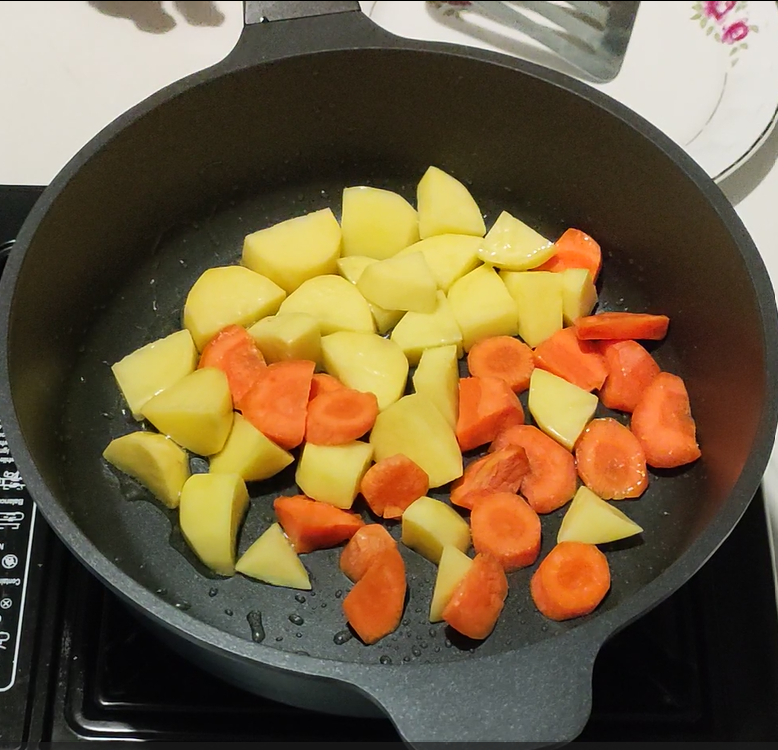
Making the Curry Paste
Traditional Ingredients: Gather an assortment of aromatic spices such as coriander seeds, cumin, turmeric, and chili peppers, along with fresh ingredients like lemongrass, galangal, and shallots.
Blending Techniques: Combine the ingredients in a food processor or mortar and pestle, grinding them into a smooth paste. Adjust the proportions to achieve the desired level of heat and intensity.

Cooking the Curry
Sautéing Aromatics: Begin by sautéing aromatic ingredients such as garlic, ginger, and shallots in a splash of oil until fragrant, infusing the base of the curry with depth and complexity.
Adding the Curry Paste: Introduce the vibrant curry paste to the pan, stirring continuously to toast the spices and release their flavors.
Simmering with Coconut Milk: Pour in the velvety coconut milk and stir until the curry is well combined. Allow the flavors to meld together as the curry simmers gently over low heat.
Incorporating Vegetables
Selection of Vegetables: Choose an assortment of colorful vegetables such as bell peppers, carrots, and potatoes to add texture and flavor to the curry.
Cooking Methods: Depending on the vegetables chosen, consider stir-frying them briefly before adding them to the curry, or simmering them directly in the sauce until tender.

Balancing Flavors
Sweetness: Balance the savory and spicy notes of the curry with a touch of sweetness from coconut milk, palm sugar, or brown sugar.
Saltiness: Enhance the flavors with a pinch of salt or fish sauce, adjusting to taste as needed.
Sourness: Brighten the curry with a squeeze of lime or lemon juice, adding acidity and freshness to the dish.
Spiciness: Customize the heat level to suit your preferences by adjusting the amount of chili peppers or chili paste in the curry.
Adjusting Consistency
Thickening or Thinning the Curry: Achieve the perfect consistency by adding more coconut milk to thin out the curry or simmering it uncovered to reduce and thicken the sauce.
Achieving Desired Texture: Strive for a silky smooth texture by blending the curry with an immersion blender or leaving it chunky for a rustic appeal.
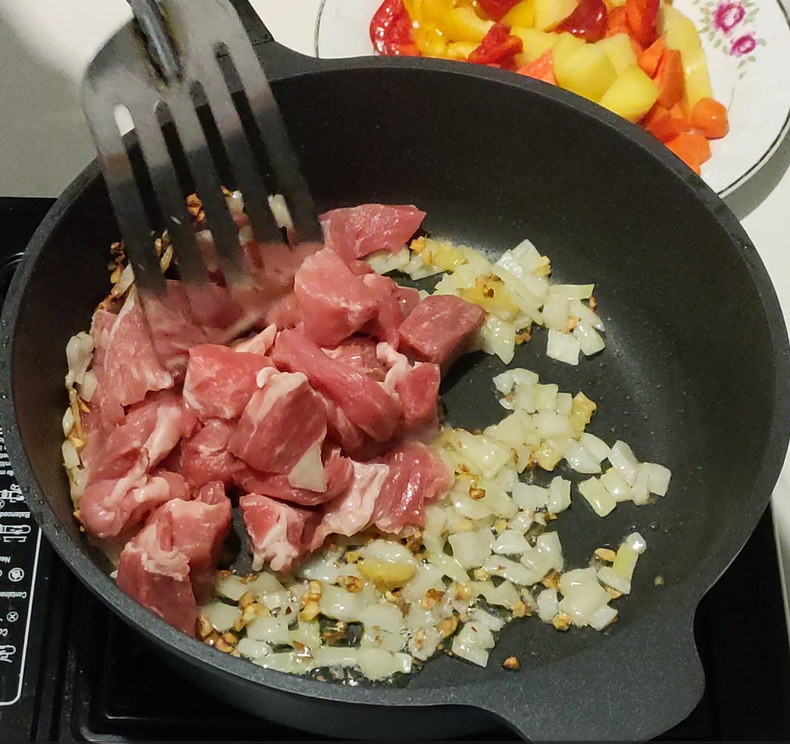
Garnishing
Fresh Herbs: Add a burst of freshness and color to the curry with a generous sprinkling of fresh herbs such as cilantro, Thai basil, or mint.
Citrus Zest: Elevate the aroma and flavor profile with a sprinkle of citrus zest from lime or kaffir lime leaves, imparting a zesty brightness to the dish.
Fried Shallots or Garlic: Enhance the texture and depth of flavor with crispy fried shallots or garlic, sprinkled over the curry just before serving.
Serving Suggestions
Rice or Noodles: Accompany the luscious curry with steamed jasmine rice or noodles, providing a satisfying base to soak up the flavorful sauce.
Condiments: Offer an array of condiments such as chili sauce, fish sauce, or pickled vegetables to customize the flavor profile according to individual preferences.
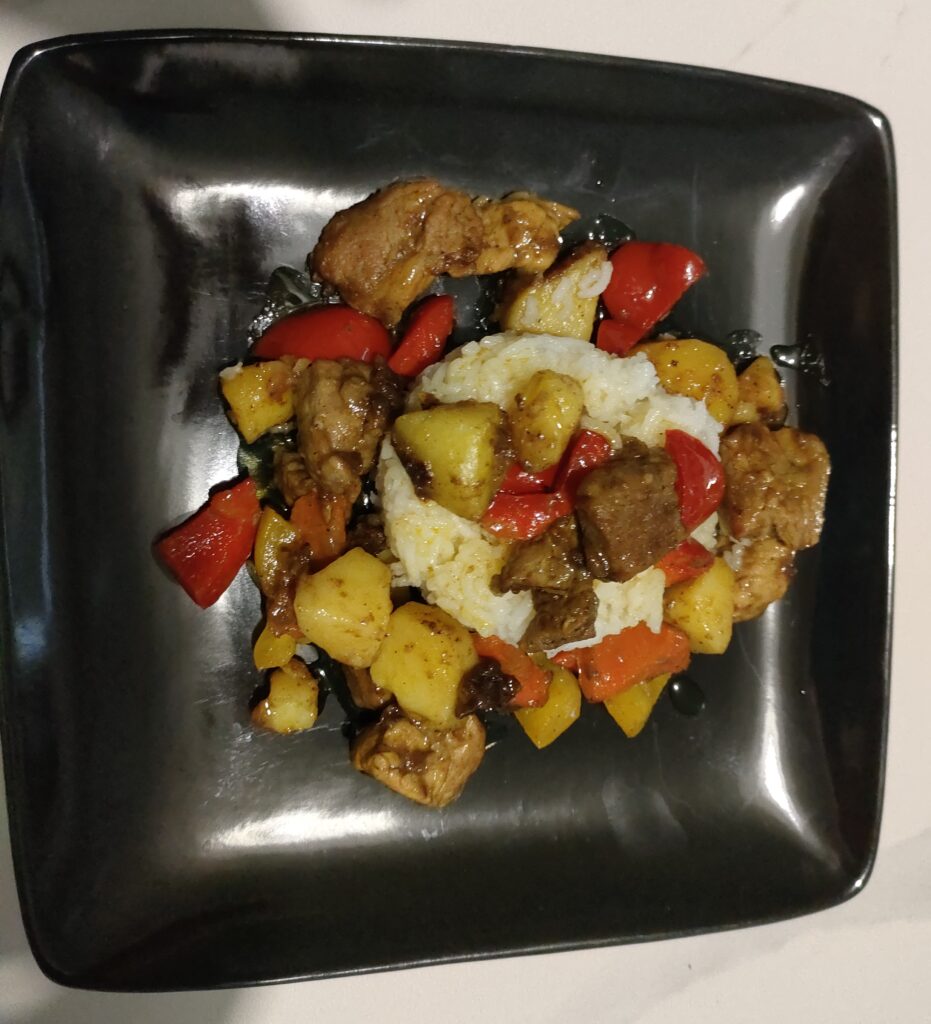
Variations and Substitutions
Alternative Proteins: Experiment with different proteins such as chicken, beef, or tofu to create diverse and satisfying variations of the curry.
Vegan or Vegetarian Options: Cater to dietary preferences by substituting meat with plant-based proteins like tofu, tempeh, or chickpeas, ensuring that everyone can enjoy the flavorful delights of Asian-style curry.
So…
In conclusion, crafting a delicious Asian-style pork curry is a delightful journey of flavors and textures, offering endless possibilities for creativity and culinary exploration. By following these simple steps and experimenting with different ingredients and techniques, you can create a mouthwatering masterpiece that will delight your taste buds and impress your guests. So roll up your sleeves, gather your ingredients, and embark on a culinary adventure that is sure to leave a lasting impression!

